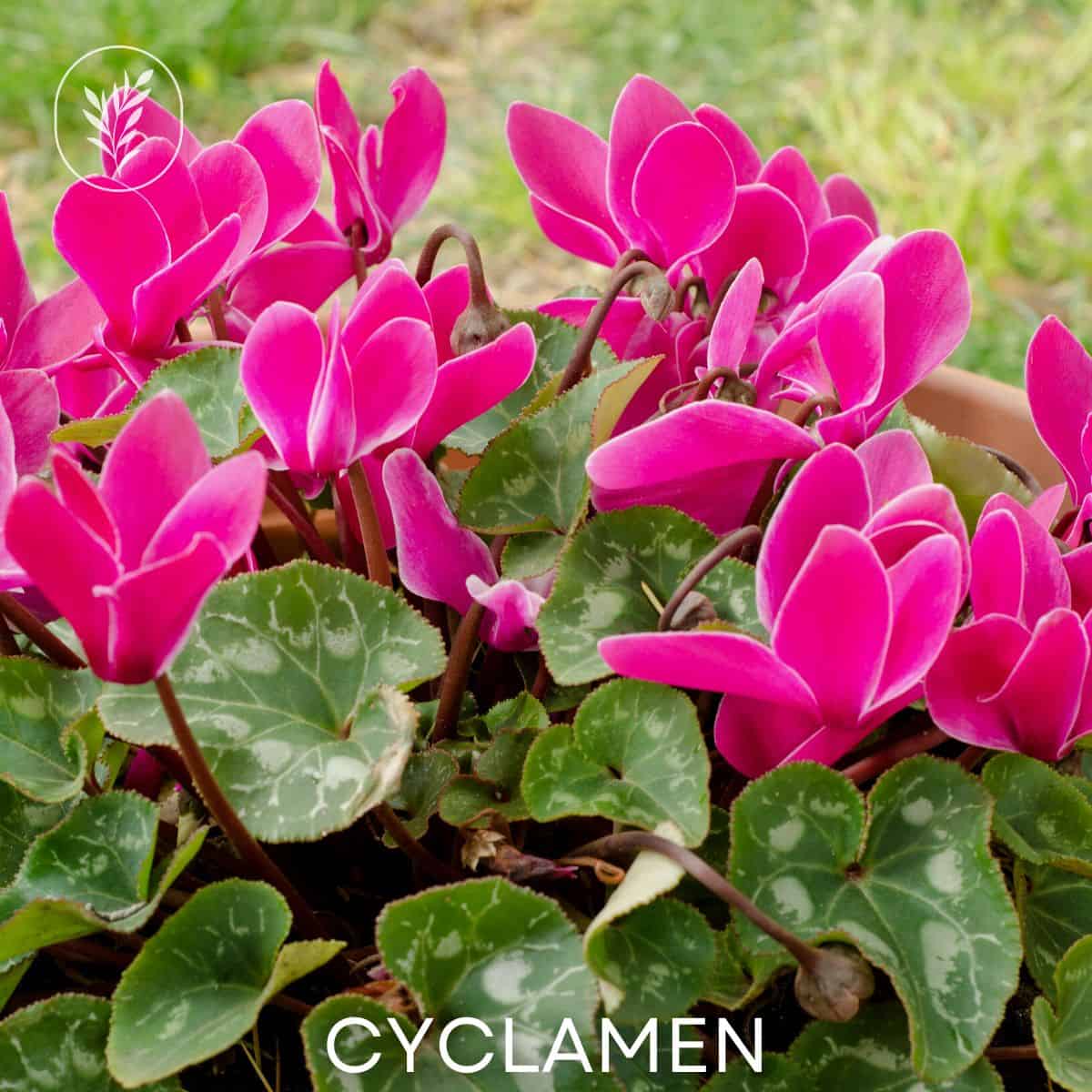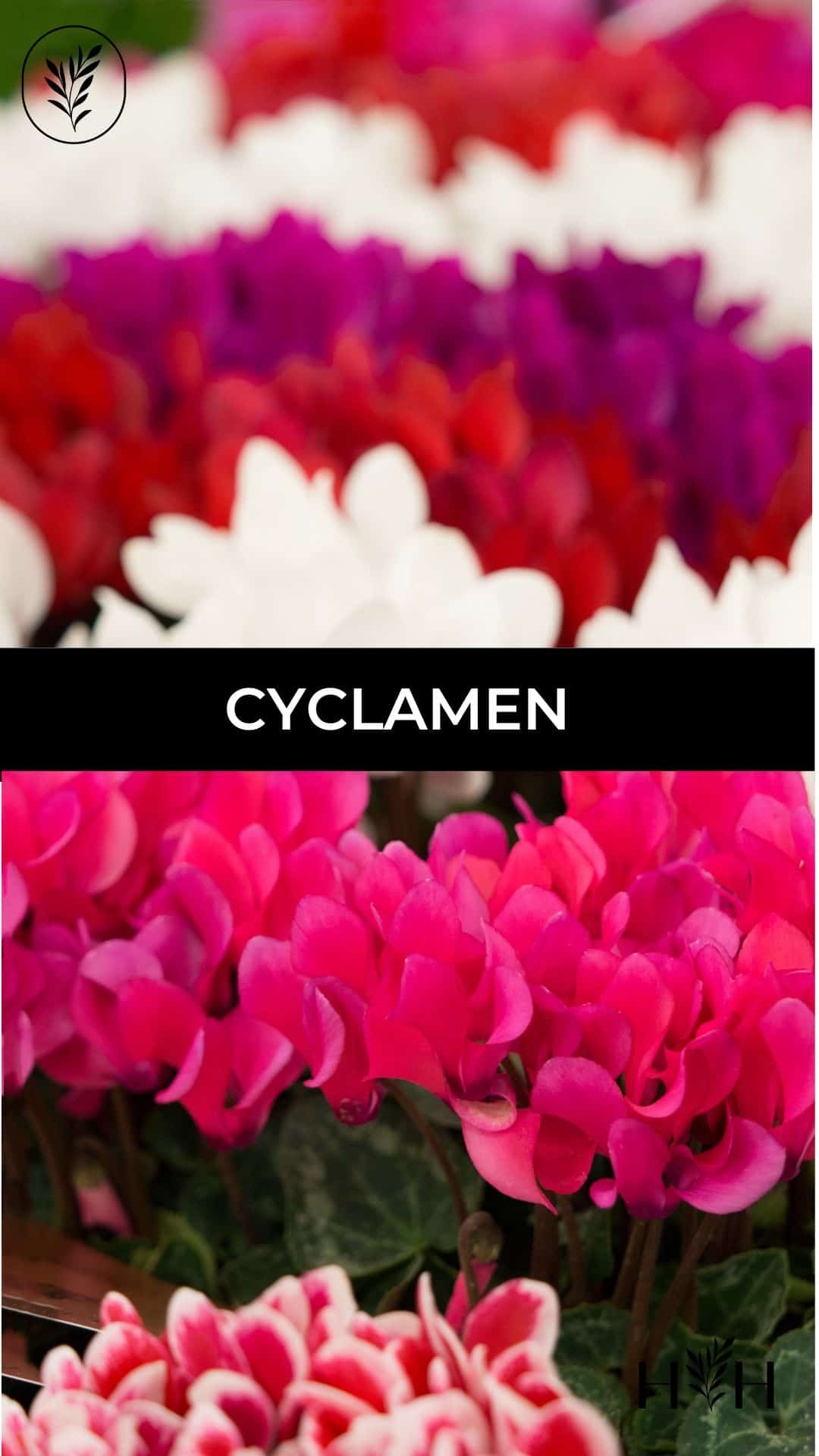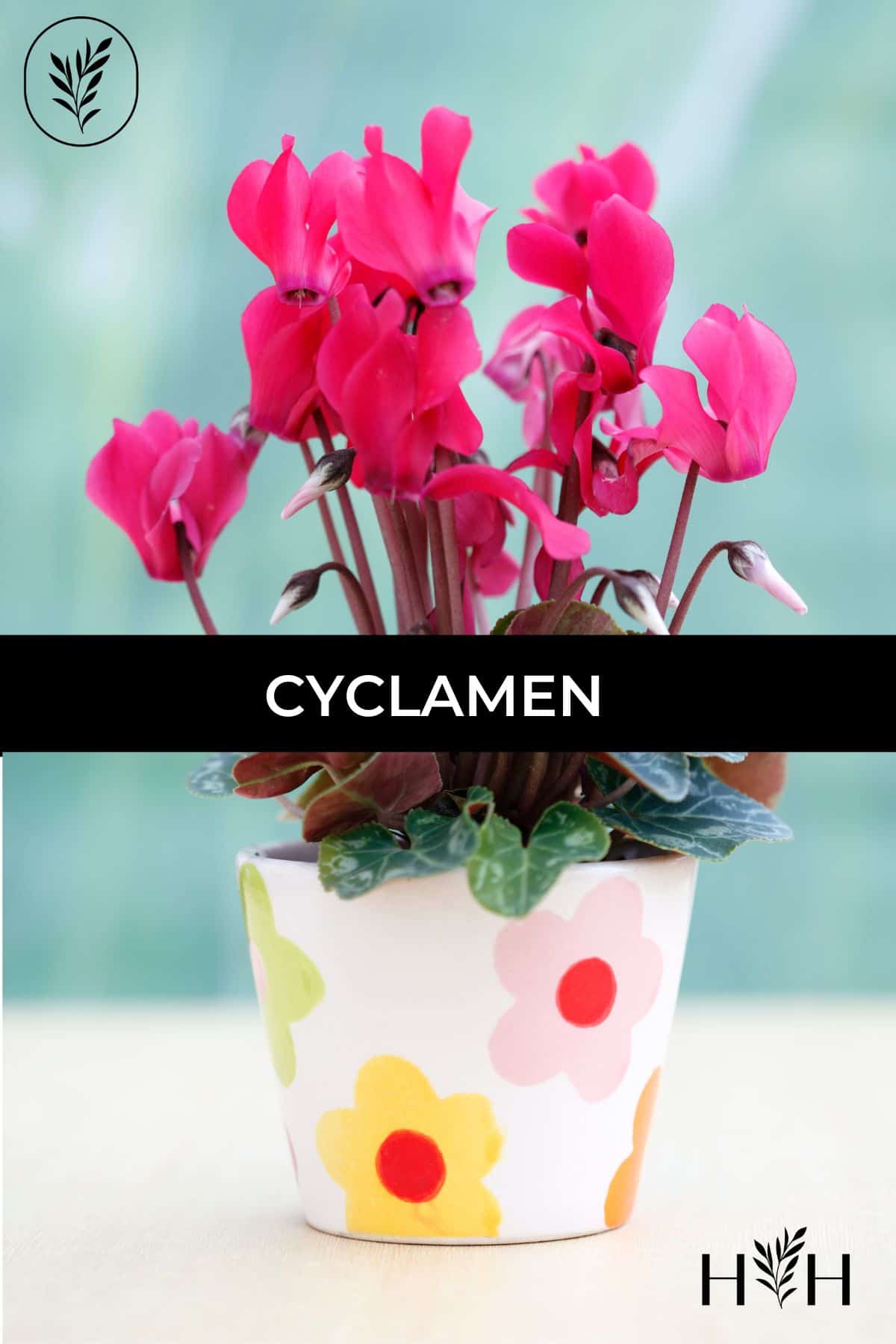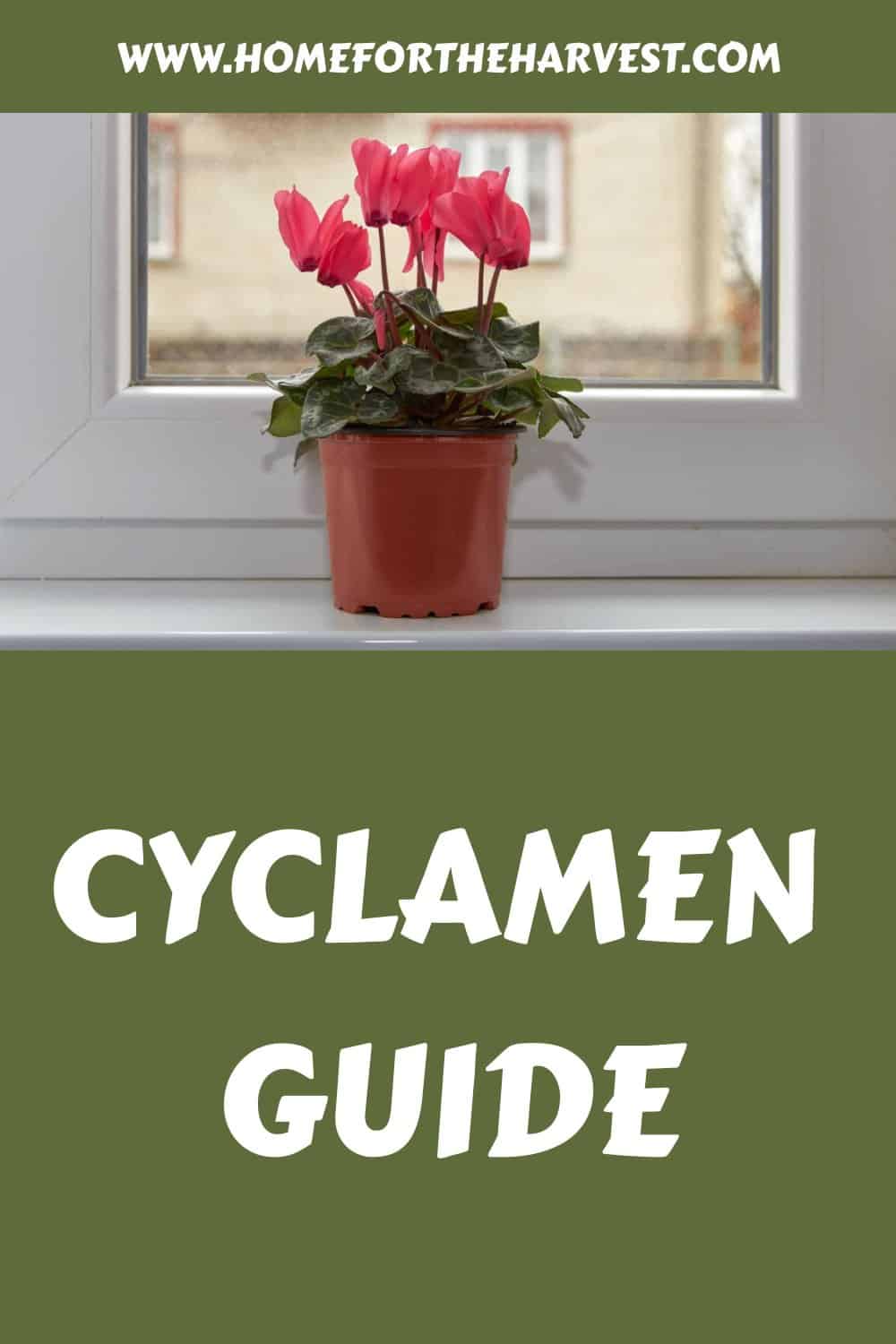Whether they are inside your house or outside in your garden, Cyclamen plants are very pretty. These plants may be a little tricky to take care of, but they are worth it!
Cyclamen are small flowering plants that grow well indoors. While Cyclamen is known mainly as a houseplant, there are certain species of Cyclamen grown more commonly as outdoor garden plants. These lovely little plants have beautiful flowers in shades of red, pink, purple, or white.
Read on to learn all about the Cyclamen plant and how to care for it.
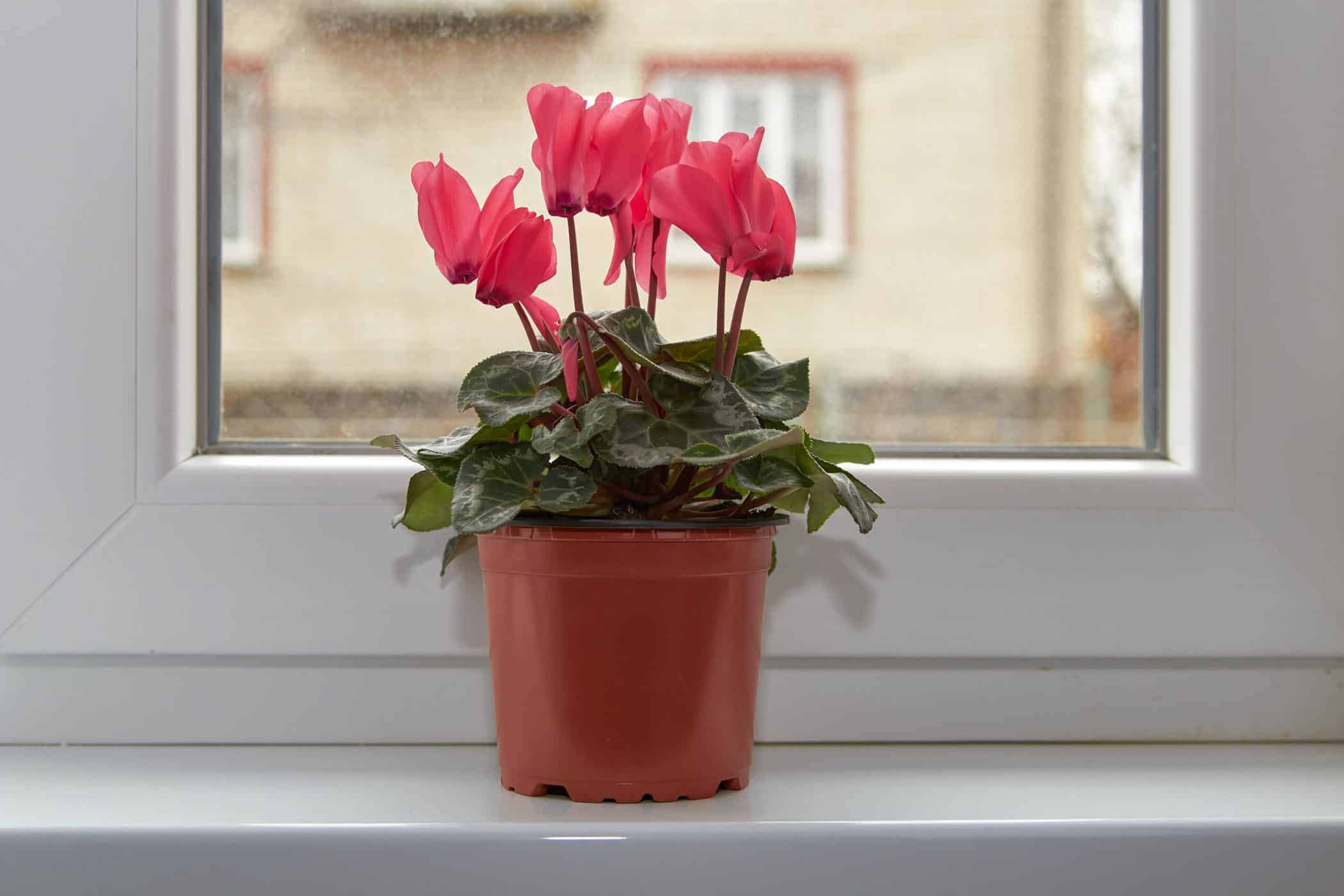
Cyclamen plant basics
Cyclamen is a beautiful flowering with pink, purple, red, or white blooms. It also has green heart-shaped leaves. Some types of Cyclamen are grown mainly as indoor houseplants while cold-hardy Cyclamen species can be grown outdoors in the garden.
This plant’s beauty makes it wonderful for a houseplant, along with the fact that it blooms during the winter months. This flowering plant is normally 6-9 inches tall and wide, but this will vary depending on which of the many different species of Cyclamen you chose to grow.
Cyclamens enter a dormant state after they bloom. will live and regrow its branches every year. However, some people don’t realize this and will throw out the plant after it enters its dormant stage. You can see that it was entered its dormant state when its leaves start to die. Once this happens, you should do is stop watering it and store it in a darker place for 8-10 weeks.
There are two types of Cyclamen: florist Cyclamen and cold-hardy Cyclamen. Hardy Cyclamen has smaller flowers and is well-adapted to be an outdoor plant. True to its name, it can withstand colder temperatures. Some species can even survive temperatures below 0 degrees Fahrenheit!
Popular species of Cyclamen
There are over 20 species of Cyclamen. Each one is slightly different.
Here are some of the most popular ones:
- Cyclamen persicum (Florist Cyclamen) – Indoor plant with pink, red, violet or white flowers
- Cyclamen hederifolium – Hardy with white or pink flowers
- Cyclamen coum – Hardy with white, pink or magenta flowers & silver leaves
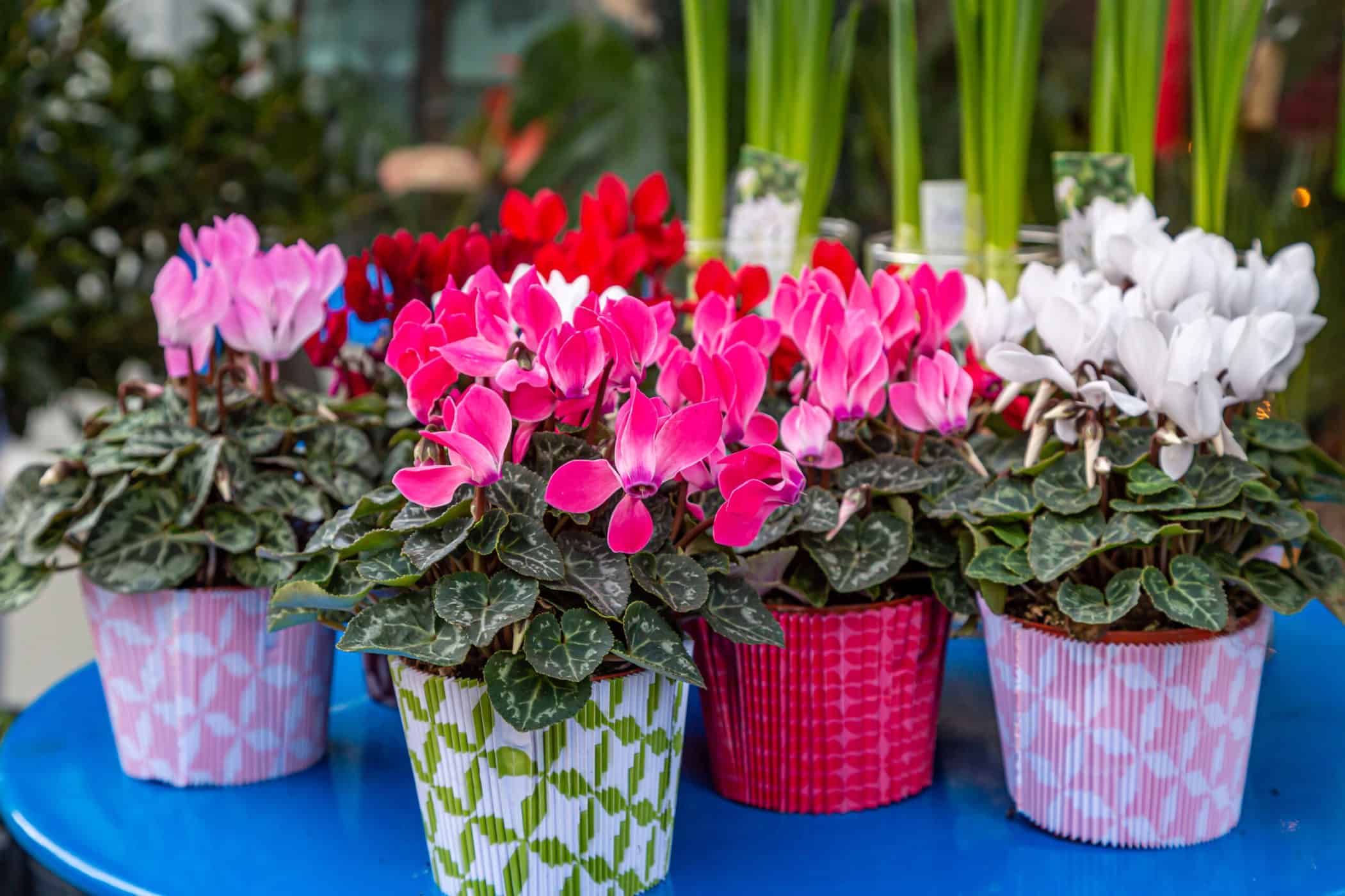
Light requirements for Cyclamen plants
Give Cyclamen lots of sunlight if possible, but it should be indirect sunlight (Source). You shouldn’t give these plants direct sunlight, because they tend to burn. Indirect light will keep them happy and beautiful. Cyclamen plants grown outdoors are typically quite tolerant of shade and are a nice choice for a flowering plant in the shade garden.
Indoors, Cyclamen plants may benefit from a bit of supplemental lighting. While these plants are tolerant of low light conditions indoors, they do need some light to photosynthesize and create the energy required for those beautiful blooms! Add a simple LED plant lightbulb or group the Cyclamen together with other houseplants under a bigger plant light.
Watering Cyclamen plants
Water Cyclamen whenever the soil feels dry down to an inch below the surface. Make sure the excess water can drain out of the pot.
When watering cyclamen, you should be sure not to pour water over the leaves. This might seem harmless, but it can cause the leaves to rot. The best way to avoid this is by watering from the bottom (fill the sink or a saucer with water and allow the soil to wick up the moisture through the drainage hole in the bottom of the planter).
Ambient temperature for Cyclamen plants
An important thing to know about Cyclamen is that they don’t like cold temperatures. These plants are comfortable at room temperature and many species can die in extreme conditions.
For indoor cyclamen, you shouldn’t let them get too hot or below 40 degrees Fahrenheit. If it gets too far outside of this range, then it will start to die. Hardy cyclamen on the other hand can survive outside even at 0 degrees. This varies depending on the specific species of hardy Cyclamen you pant.
Indoor humidity for Cyclamen plants
Cyclamen plants like moderate to high humidity. When these flowers are blooming in the winter, the indoor humidity isn’t enough for them. To help give them the humidity they need, try using a humidifier to bring the surrounding air humidity level up.
One thing to avoid is misting your Cyclamen. This practice does more harm than good for this plant, because it may cause rotting or fungal disease. Do not mist your Cyclamen (even if some of your other houseplants seem to enjoy it). A whole-room or whole-house humidifier is a better option.
Potting mix for Cyclamen
Cyclamen plants like well-drained soil. If not, it can cause a ton of problems. Most high-quality potting mixes drain out water easily, especially if they contain perlite.
These plants also do better in soil that is slightly more acidic. Ther is a pretty easy way to get a good PH level soil for your cyclamen. To do this you use a basic soil mix but then add in some sphagnum peat. This will raise the PH to a good level for cyclamen.
Cyclamen plant fertilizer
Cyclamen plants inside containers will require regular feeding with fertilizer. Even Cyclamen planted in the ground outdoors may require the odd feeding.
Use outdoor fertilizer for flowering plants on outdoor in-ground cyclamen, and choose houseplant fertilizer for potted cyclamen plants. Follow the instructions on the specific type of fertilizer you choose.
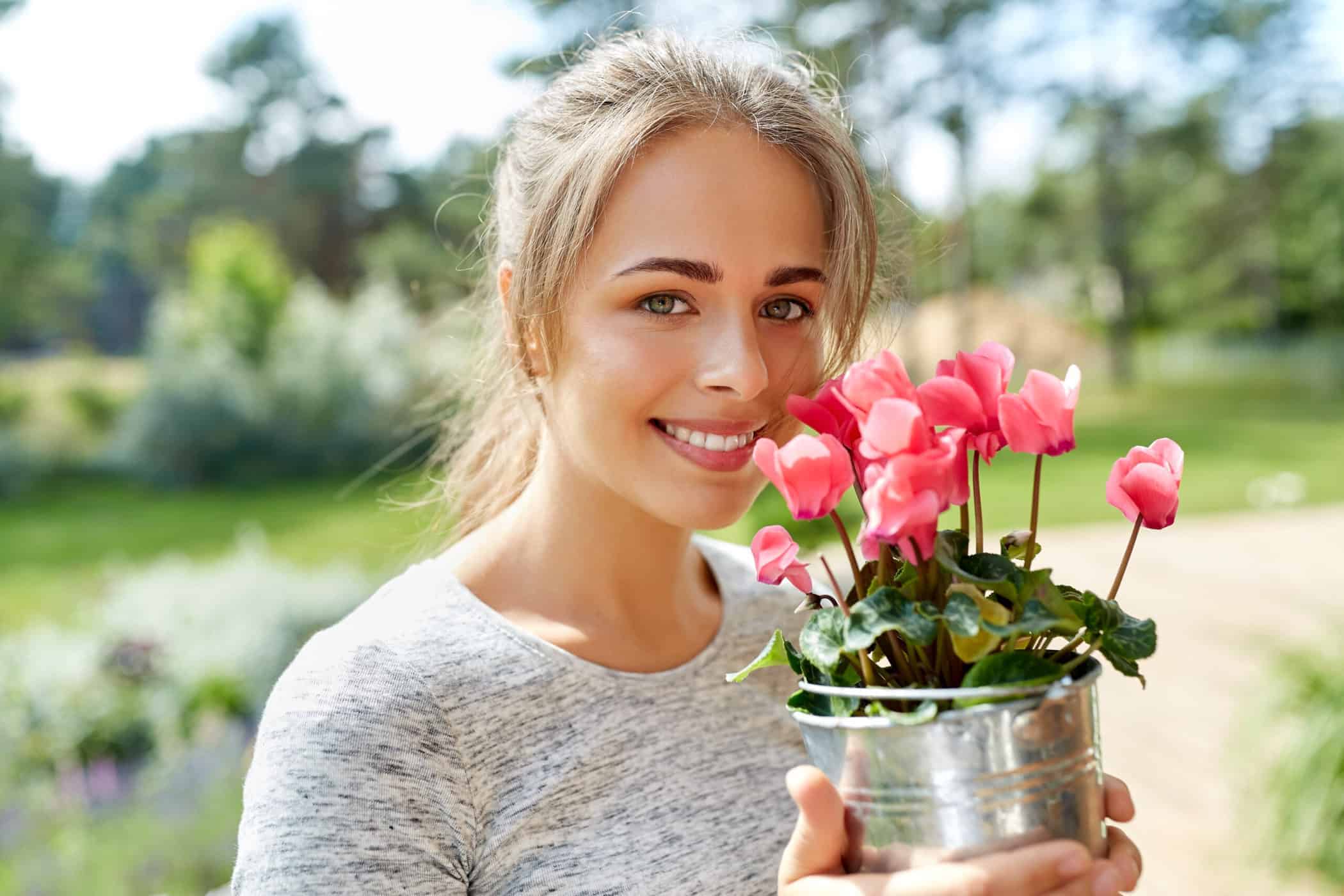
Planter pots for Cyclamen
Cyclamen plants require plant pots large enough to accommodate the underground tubers. When repotting Cyclamen, you want a pot that is slightly bigger than this tuber. They don’t have to be very big, just about an inch more in diameter than the tuber. Over years of growing, this tuber will grow and you will eventually have to re-plant it in a bigger pot.
One of the really important things that the pot needs to have is drainage holes. Without these, the soil will be too saturated and will cause root rot. If your planter doesn’t have a drainage hole, leave it in the plastic nursery pot and pop the whole thing inside the decor planter. Then the plant can be easily removed from the decor planter for watering at the sink.
Common pests affecting Cyclamen plants
Cyclamen can be targeted by a few annoying pests. The most prominent are spider mites and aphids. Spider mites are small bugs that like to live in the flowers and new leaves of the Cyclamen. Spider mite infestations can be easily dealt with by using organic insecticides, specifically those made for use on houseplants.
Another pest to be aware of are aphids. Like spider mites, aphids are small bugs that will infest your cyclamen plant. They like to eat the new growth on the plant. Aphids drink the sap from these plants, weakening them and also spreading diseases.
There are many ways to get rid of aphids. A basic organic insecticide is an option because it will kill aphids. On the other hand, you can try non-chemical methods, like buying ladybugs, which love to eat aphids.
Common diseases affecting Cyclamen plants
One disease that affects Cyclamens is botrytis, which is also known as grey mold. This condition usually appears when Cyclamen plants are exposed to overly. humid conditions.
Botrytis can result from overwatering and watering the leaves of the plant. So, don’t overwater your Cyclamen, and be sure to remove dead leaves and blooms.


